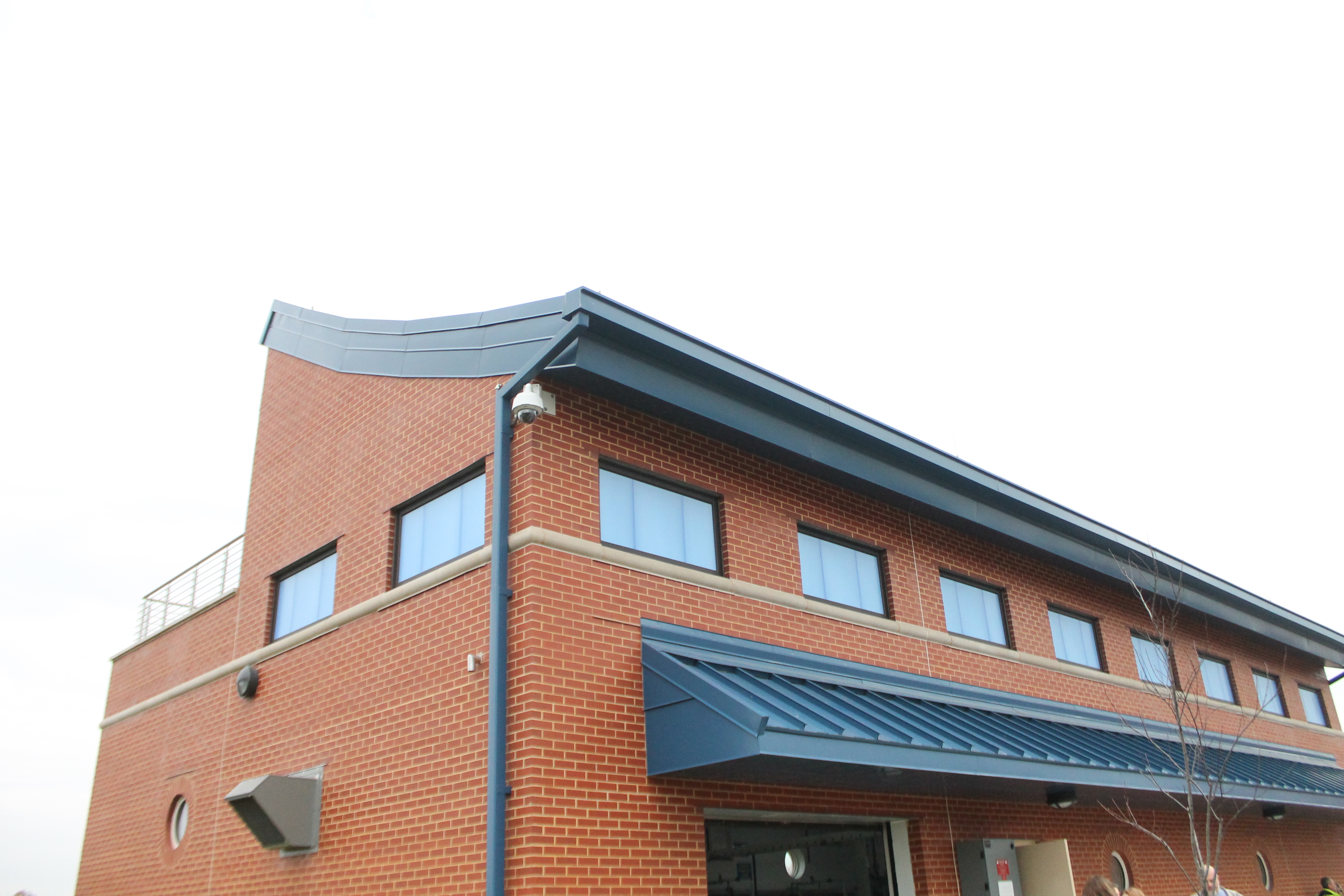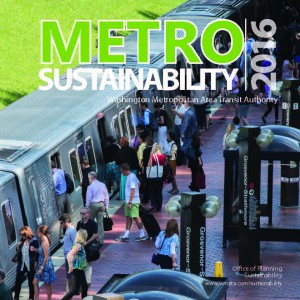Two years into operation Metro’s solar powered high efficiency water treatment facility continues to work as designed by producing as much energy as it needs on-site to perform the entire subsurface water treatment process.
 According to Basil Borisov, Environmental Engineer at Metro’s Office of Environmental Management and Industrial Hygiene, “During the summer of 2016, the Largo Water Treatment Facility has been generating more power than it uses. The monthly surplus of electricity has almost reached 300 kWh; for comparison, a typical refrigerator uses 50 to 100 kWh per month. Excess electricity was generated on more than 25 days out of each month.”
According to Basil Borisov, Environmental Engineer at Metro’s Office of Environmental Management and Industrial Hygiene, “During the summer of 2016, the Largo Water Treatment Facility has been generating more power than it uses. The monthly surplus of electricity has almost reached 300 kWh; for comparison, a typical refrigerator uses 50 to 100 kWh per month. Excess electricity was generated on more than 25 days out of each month.”
Clean energy water treatment supporting a clean Bay – keep up the good work.
As Earth Day approaches, we’ve documented the strong foundation of sustainable practices at Metro in our newly updated Sustainability Report.
 Metro has launched a rebuilding and service campaign that is aimed to bring riders back to Metro by providing safe effective and reliable service. Because service is one of the biggest sustainability benefits transit provides, rebuilding its ridership will help the authority reach the regional ridership, climate change and connected communities goals as outlined in Metro’s Sustainability Initiative.
Metro has launched a rebuilding and service campaign that is aimed to bring riders back to Metro by providing safe effective and reliable service. Because service is one of the biggest sustainability benefits transit provides, rebuilding its ridership will help the authority reach the regional ridership, climate change and connected communities goals as outlined in Metro’s Sustainability Initiative.
Metro’s annual sustainability report provides a rare view into Metro’s efforts to achieve the sustainability goals it set for itself – reporting on successes and setbacks alike. The past and future projects list under each target reads like an encyclopedia of transit agency best practices from testing energy efficient switch heaters to designing pedestrian accessible stations.
Rebuilding sustainably where possible will help Metro achieve long term financial savings while creating a cleaner, more modern, safer, and more reliable system. These investments will help Metro on it’s trajectory to reach its ambitious but achievable sustainability targets. To read more about Metro’s achievements to date and upcoming projects, check out Metro’s 2016 Annual Sustainability Report.
Tell us what you think of Metro’s sustainability efforts. We are always listening to new ideas for potential projects. Submit your ideas online or email them to planning@wmata.com.

Connecting Communities Concept. Click image for a larger version.
As the Washington metropolitan area continues to grow, the shape of that growth will define the character and sustainability of our region for decades to come. Attracting a significant proportion of the area’s new households and jobs to locations near rail stations and bus stops will provides a host of significant environmental and social benefits that can positively effect quality of life in the region. Quality of life can be improved by convenient access to services via walking, biking, and transit, which reduces road congestion and enables significantly less time to be wasted traveling between destinations via automobile. Compact development also serves to help preserve regional environmental resources such as open space, clean air, and healthy waterways.
- Open Space – By encouraging vertical development on existing underutilized brownfield and greyfield sites, greenfield sites on the urban periphery can be preserved. As and added benefit, this also means that no additional costs are incurred for new road and utility infrastructure to make these new sites viable.
- Clean Air – Reduced mobile emissions from vehicle travel improves local and regional air quality. Just as having cleaner air is important for human health and comfort, it is also important for the world around us. Cleaner air means fewer pollutants in our environment and that means plants, animals, water and soil are healthier too.
- Healthy Waterways – Compact development leaves more land open for stormwater detention and retention on undeveloped land at the urban periphery, thereby reducing the erosive impacts of stormwater runoff on rivers and streams.
One example of how Metro has worked with partners to attract regional infill growth is the NoMa-Gallaudet U station, the first infill station constructed on the Metrorail system. Utilizing what would have been excess capacity on the Red Line, the NoMa neighborhood, anchored by the station, has emerged as a high-density mixed-use hub for residents and commuters alike. Three years before the station opened, the assessed value of real estate in the 35 surrounding blocks was $535 million. Ridership has grown steadily since the station opened in 2004. Three years after the opening (in 2007) it was $2.3 billion — a 330-percent increase. From 2,100 trips in 2005 the station now has an average of 7,400 trips each weekday. Currently, based on the development pipeline data from NoMa BID the neighborhood is approximately 50% built out, with 16 million square feet of commercial and residential space. That is the equivalent of 50 high-density buildings in the 350 acre around the station. In contrast, to accommodate this scale of development in a low-density suburban setting would require in excess of 900 acres and would require new parking and roadway infrastructure due to the absence of transit.
A new Connecting Communities Key Performance Indicator (KPI) (PDF) is being developed to measure regional household growth in areas that are adjacent to Metro. This KPI will be reported through Metro’s Vital Signs Report in 2014.
This post forms part of a series featuring content from Metro’s Sustainability Agenda, part of Metro’s Sustainability Initiative.
 According to Basil Borisov, Environmental Engineer at Metro’s Office of Environmental Management and Industrial Hygiene, “During the summer of 2016, the Largo Water Treatment Facility has been generating more power than it uses. The monthly surplus of electricity has almost reached 300 kWh; for comparison, a typical refrigerator uses 50 to 100 kWh per month. Excess electricity was generated on more than 25 days out of each month.”
According to Basil Borisov, Environmental Engineer at Metro’s Office of Environmental Management and Industrial Hygiene, “During the summer of 2016, the Largo Water Treatment Facility has been generating more power than it uses. The monthly surplus of electricity has almost reached 300 kWh; for comparison, a typical refrigerator uses 50 to 100 kWh per month. Excess electricity was generated on more than 25 days out of each month.”



Recent Comments